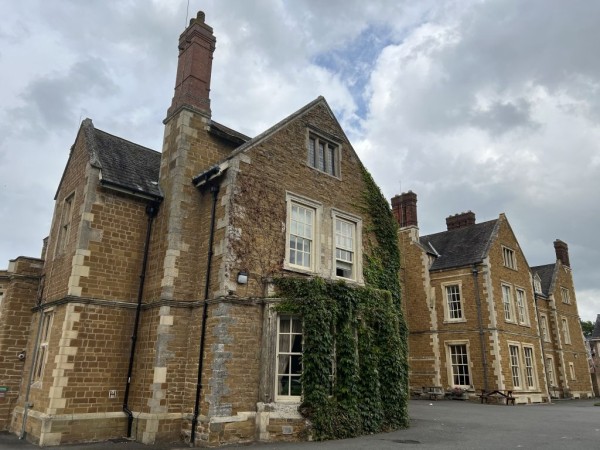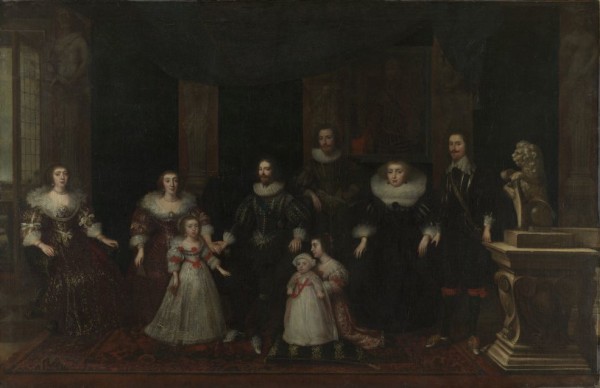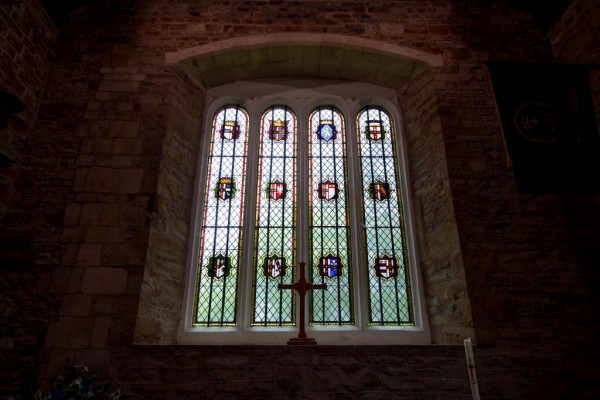Villiers’s Leicestershire Roots
How did a boy from rural Leicestershire grow up to become the favourite of two kings, rise to fame and fortune and shape the course of early 17th century Britain?

Sir George Villiers’s predecessors had enclosed the land around Brooksby for sheep pasture. By 1603, the village of Brooksby had gone, with only the church and manor house remaining. Sir George also owned Goadby Marwood, sold to him by the Beaumonts in 1575.
The Beaumont and Villiers families had long been connected by ties of friendship and marriage. Mary came from a lowly branch of the Beaumonts but is credited with pushing her second son George into royal circles to gain fame and fortune. She herself became close to King James I and was made Countess of Buckingham in 1618. Even at the height of his fame, she said he was ‘the same naughty boy, George Villiers’.


The Family of the 1st Duke of Buckingham (1592-1628) 1628, British school
© Royal Collection Enterprises Limited 2024 | Royal Collection Trust
George Villiers, 1st Duke of Buckingham is seated, holding the hand of his wife, Katherine, while his two eldest children, Lady Mary Villiers, and George, later 2nd Duke of Buckingham are in front together with an attendant. On the far left is the Duke's sister, Susan, Countess of Denbigh, while to the right are his widowed mother, Mary Beaumont, Countess of Buckingham, accompanied by her younger sons, John, Viscount Purbeck and Christopher, 1st Earl of Anglesey. Hanging on the wall is a portrait of the Duke's father, Sir George Villiers who had died twenty-two years before this picture was painted.
Villiers’s status as royal favourite also benefitted his family. King James publicly committed to advance the Villiers family above all others and was close to George’s mother, Mary and his wife Katherine. George helped even distant members of his family to make favourable marriages.


© Royal Collection Enterprises Limited 2024 | Royal Collection Trust
George Villiers, 1st Duke of Buckingham (1592-1628) with his wife, Lady Katherine Manners (d.1649), and their children George (1628-1687), later 2nd Duke of Buckingham and Lady Mary Villiers (1622-1685), later Lady Herbert & Duchess of Richmond, Gerrit Van Honthorst (Utrecht 1590-1656)

George Villiers was born at Brooksby Hall near Melton on 28 August 1592. The second son of his father’s second marriage, his prospects were poor. He would have no inheritance, but what he did have was good looks, charm and an ambitious mother.
His father was Sir George Villiers who had served as Sheriff for Leicestershire in 1591 and was knighted by Queen Elizabeth I in 1593. His mother, Mary, came from a poorer branch of the Beaumonts, an influential Leicestershire family who had their seat at Coleorton Hall.
Villiers was sent to school in Billesdon. After his father died in 1606, he moved with his mother to Goadby Marwood. Mary’s marriage to Sir Thomas Compton introduced the family to a higher social circle. George, by now 16, and his elder brother John were sent to France in 1609 to learn languages, fencing, dance and riding, all valuable skills for someone with their sights set on a career at court.
The young George caught King James I's attention in 1614 during a hunt at Apethorpe in Northamptonshire and he was championed by opponents of the King’s then favourite Robert Carr, Earl of Somerset. They helped secure Villiers's appointment as Royal Cupbearer. This gave him access to the King’s table, where his fine features and skilled conversation delighted the monarch.
Even at the height of his fame, George maintained his links with Leicestershire. King James visited the Villiers’s family home at Goadby Marwood during his summer progress of 1615.
George married Katherine Manners, daughter of the Earl of Rutland, the most influential aristocrat in the area. He then bought a house at Burley-on-the-Hill, where the newly married couple entertained the King and other courtiers in 1621.

